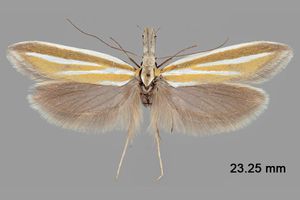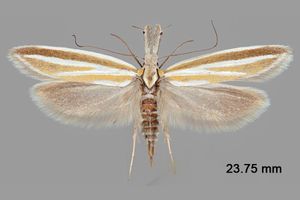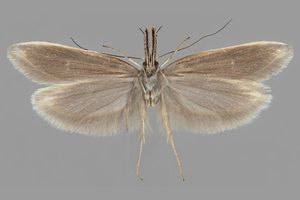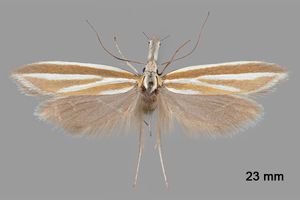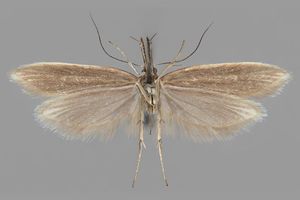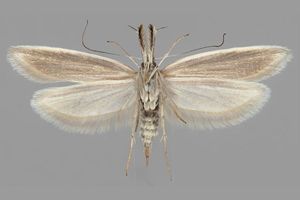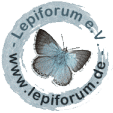

 +1Kontinente:EU
+1Kontinente:EU2. Diagnose
2.1. Männchen
2.2. Weibchen
4. Weitere Informationen
4.1. Etymologie (Namenserklärung)
Der Name ist selbsterklärend. Tabell et al. (2025: 56) bestätigen: "The specific epithet refers to close affinity with P. nobilella."
4.2. Taxonomie
Tabell et al. (2025) diskutieren die bisher 7 aus Spanien (inkl. Balearen und Kanaren) bekannten Pleurota-Arten und ergänzen sie um gleich 6 neu beschriebene Arten. P. subnobilella sieht nach ihnen ähnlich wie P. nobilella und P. honorella aus, lässt sich aber doch schon äußerlich von den beiden trennen. Die Autoren erklären zur Genetik von P. subnobilella: "All four type specimens were sequenced successfully, resulting in 658 (n=3) and 653 bp DNA barcodes. The nearest named neighbour to P. subnobilella is P. sobriella, with a 1.66 % divergence. The barcodes of P. subnobilella exhibit no intraspecific variation."
4.3. Faunistik
Tabell et al. (2025: 57) schreiben zur bisher bekannten Verbreitung: "Known only from two type localities in the province of Alicante in south-eastern Spain." Dort fliegt die Art gemeinsam mit P. nobilella.
4.4. Typenmaterial
Tabell et al. (2025: 55) dokumentieren: "Holotype ♂ (GP 5900 J. Tabell, DNA sample 26130 Lepid Phyl): SPAIN, Alicante, Albatera 9 km NNW, 460 m, N38.25317 W0.91450, 21-V-2016, J. Tabell leg. (coll. MZH), http://id.luomus.fi/GBT.27, BOLD sample ID: MM26130. Paratypes: 1 ♀ (GP 6348 J. Tabell, DNA sample 26199 Lepid Phyl), same collecting data as holotype; 2 ♂♀ (GP 5303 J. Tabell, DNA sample 23663 Lepid Phyl; GP 5399 J. Tabell, DNA sample 23658 Lepid Phyl), Spain, Alicante, San Miguel de Salinas 6 km NW, 22-IV-2009, J. Tabell leg. (coll. TAB, 1 ex. coll MNCN)."
(Autor: Erwin Rennwald)
4.5. Literatur
- Erstbeschreibung: Tabell, J., Honey, M., Leger, T., Mutanen, M., Nupponen, T. & P. Sihvonen (2025): New and poorly known Pleurota Hübner, [1825] species from peninsular Spain, the Balearic Islands, and the Canary Islands (Lepidoptera: Oecophoridae, Pleurotinae). — SHILAP Revista de lepidopterología, 53 (209): 43-74. [zum PDF-Download auf shilap.org]


